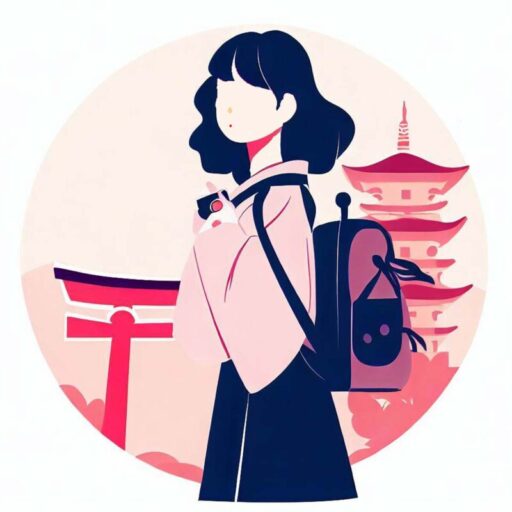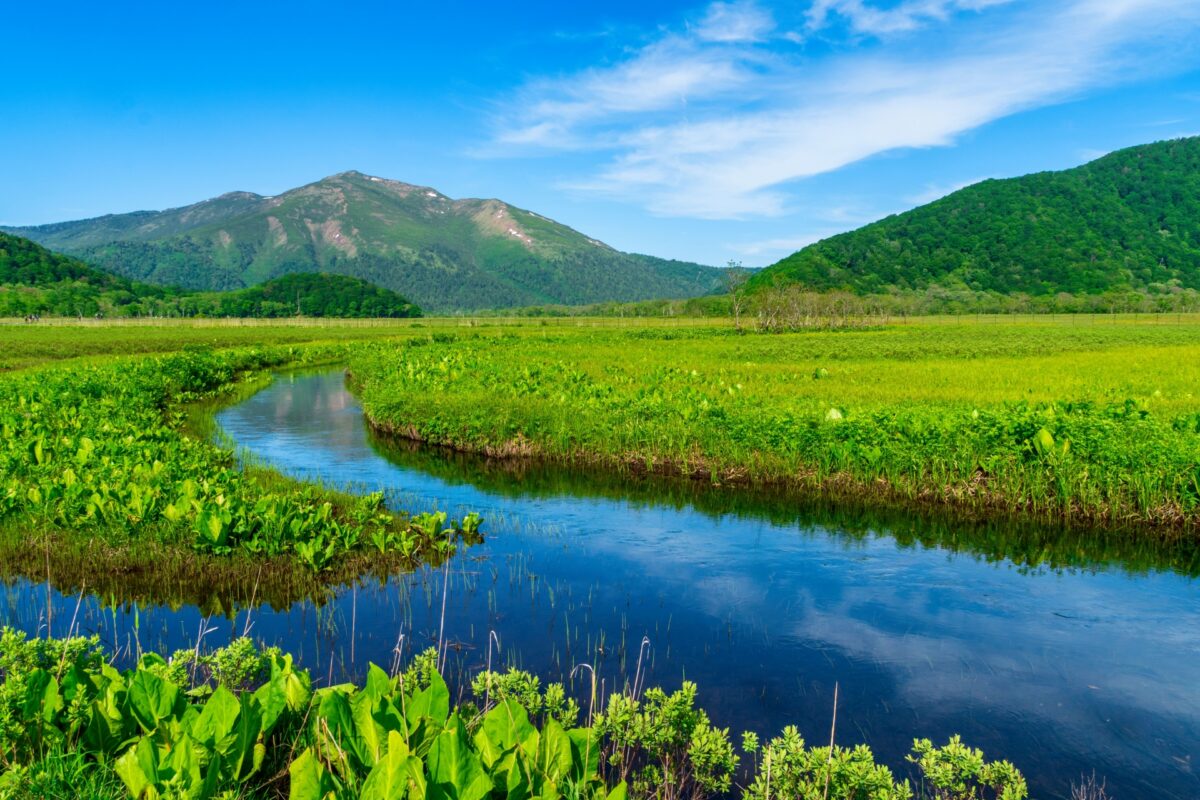A Thorough Explanation of the Charm of Bōshu! A Journey Through Japan’s Forty Seasonal Divisions and Regional Customs.

『 This article is… 』
The article introduces the unique features of various regions in Japan related to “Bōshu.” It covers topics such as fresh vegetables in Hokkaido, seed sowing festivals in Miyagi Prefecture, prayer festivals in Fukuoka Prefecture, enjoying the four seasons in the heart of Tokyo, and traditional customs in Gifu Prefecture. Each region’s charm is explained in detail, making it a valuable resource for those who love Japanese seasons and culture. By learning about Bōshu customs and regional characteristics, readers can gain a deeper understanding of the attractive points of different places in Japan. Reading this article provides information helpful for enjoying Japan’s rich culture and landscapes, and it can be a useful tool for planning trips.
Hello, I’m Kasumi, a travel web writer. Through my travels across Japan, I have had the opportunity to immerse myself in this country’s rich culture and diverse customs, gaining a deep understanding of their allure.
This time, I will focus on one of the forty seasonal divisions of Japan, ‘Bōshu,’ and introduce its history, origins, meaning, and the unique characteristics of each region. I want to share the charm of Bōshu, as experienced in my travels, blending the atmosphere unique to this time of year with traditions that are still alive today.
As a symbol of Japan’s four seasons, what does Bōshu signify? How have the local customs rooted in it been passed down to the present day? Let’s explore these together.
The Origin and Meaning of Bōshu
Have you ever heard the word “Bōshu”? This term refers to a specific period in Japan’s traditional calendar, particularly among the forty seasonal divisions. However, the charm of Bōshu extends beyond just being a part of the calendar. So, what exactly does Bōshu mean, and what is its origin?
Meaning of Bōshu
Bōshu falls around early June, just before the summer solstice. This period marks the sowing season for various crops, including rice, and is a crucial juncture for agriculture. In the rice fields of Niigata Prefecture that I visited, planting takes place during this period. The landscape of lush green rice fields epitomizes the onset of summer in Japan.
Origin of Bōshu
But what is the origin of the name “Bōshu”? The name derives from plant characteristics. “Nogi” refers to plants like rice and wheat, which have sharp hairs at the tip of their ears. The term “Bōshu” was coined by combining “nogi,” indicating these plants, with “shu,” meaning the seeding period. It symbolizes the start of maturity for crops like rice and wheat and serves as a critical indicator for farming activities.
Bōshu in the Modern Era
In modern times, advancements in agricultural technology have slightly shifted the timing of sowing. However, in traditional farms in Gifu Prefecture that I visited, Bōshu is still regarded as important, following ancestral wisdom for farming practices. Such traditions continue to be cherished in various parts of Japan.
Understanding the meaning and origin of Bōshu deepens our appreciation for Japan’s seasonal transitions and associated life rhythms. In the next part, I will delve into regional customs related to Bōshu.
Regional Customs of Bōshu
Japan, being a long island nation, has diverse climates and cultures across different regions. Bōshu period sees various customs and events based on the region. Let’s look at some of the Bōshu customs I experienced during my travels.
Customs in the Tohoku Region
In the Tohoku region, some areas celebrate “Seed Sowing Festivals” when Bōshu arrives. In a small village in Miyagi Prefecture I visited, the community held a festival at the local shrine, praying for a successful sowing season. The gathering of villagers to pray for a bountiful rice harvest reflects the depth of community bonds.
Characteristics in the Kyushu Region
In contrast, the Kyushu region has unique events during Bōshu. For instance, in an area in Fukuoka Prefecture, a traditional “Bōshu Prayer Festival” is held. Here, rituals are conducted at local shrines to pray for a bountiful harvest, with community participation.
Modern Approaches in the Kanto Region
In the Kanto region, modern initiatives include agricultural experience events. In Chiba Prefecture, events for children to experience rice planting and sowing are popular, attracting participants from urban areas. This represents a contemporary movement emphasizing connection with agriculture.
Significance of Regional Customs
These customs are more than mere events; they reflect the history and culture of each area, playing a vital role in deepening community bonds. Through Bōshu customs, we can learn about the diverse cultures and values across Japan.
In the next part, I’ll explore the history and evolution of Bōshu, which offers valuable lessons even for us in the modern era.
History and Evolution of Bōshu
To understand the customs and significance of Bōshu, it’s crucial to trace its history. Japan’s sensitivity to the four seasons has been deeply rooted since ancient times, with Bōshu being a part of this tradition.
Bōshu in Ancient Times
In ancient Japan, agriculture was the foundation of life, and farming activities strictly followed the calendar. Bōshu marked an essential period for planting seeds, crucial for rice cultivation. People in those times lived in harmony with nature’s cycles, deeply feeling the seasons.
From the Middle Ages to the Modern Era
During the Middle Ages, Japan entered the Sengoku period, bringing significant social and cultural changes. However, the importance of Bōshu continued. Farmers held festivals at shrines during this period, praying for a good harvest. In the Edo period, rural societies developed, and Bōshu customs took root.
With modern advancements in agriculture and urbanization, farming schedules have changed. However, the name and origins of Bōshu continue, remaining a vital milestone in agriculture.
Significance and Lessons of Bōshu
The history of Bōshu narrates the development of Japan’s agriculture and culture. Valuing the seasons and living in harmony with nature are lessons still relevant in modern society. In the next part, I’ll delve deeper into the characteristics of Bōshu and the differences across regions, encapsulating the charm of traveling through Japan’s seasons.
Characteristics and Regional Differences of Bōshu
Bōshu, among Japan’s seasons, is distinctive for its features and regional variations. I’ll introduce the characteristics of Bōshu and the diverse customs and landscapes in different areas.
Characteristics of Bōshu
One characteristic of Bōshu is feeling the arrival of summer across Japan. Temperatures rise, greenery becomes lush, and nature’s vitality peaks. This period also highlights Japan’s landscapes, with fresh greenery and bright green rice fields.
Regional Differences
Each region in Japan has its unique customs and events related to Bōshu. In Hokkaido, the harvest of vegetables and grains intensifies, bringing fresh produce to markets. In contrast, Kyushu sees bountiful harvests of summer vegetables and melons.
In Tokyo’s urban areas, Bōshu-related events are common in parks and gardens, allowing city dwellers to experience the seasons. Especially in Japanese gardens, the lush greenery attracts many visitors.
Enjoying the Charm of Bōshu
Traveling around Japan during Bōshu lets you enjoy unique regional customs and beautiful landscapes. Tasting fresh local ingredients also allows you to experience the changing seasons of Japan.
In the next part, I want to delve into how Bōshu is preserved and utilized in modern times, further enriching the charm of traveling through Japan’s seasons.
Preservation and Utilization of Bōshu in Modern Times
Bōshu’s traditions and customs are preserved and adapted in modern times. Bōshu holds significant meanings not only in the development of Japanese agriculture and culture but also in contemporary society.
Agriculture and Bōshu
Agriculture is a key industry in Japan, with Bōshu marking a crucial phase in farming schedules. Modern agricultural techniques have led to more efficient farming practices. However, aligning crop cultivation and harvesting with the Bōshu period continues to play a vital role in Japanese agriculture.
Bōshu Season and Lifestyle
The Bōshu season impacts various aspects of life in Japan. For example, the harvest of vegetables and fruits begins in earnest, bringing fresh ingredients to markets. The warmer weather also marks the season for outdoor events and festivals, enjoyed by many.
Bōshu and Tourism
During Bōshu, tourists visit different regions of Japan, enjoying local cultures and customs. The tourism industry leverages Bōshu to promote regional attractions through events and campaigns, fostering regional development and exchange.
Meaning of Bōshu
Bōshu’s meaning extends beyond just a part of the calendar; it’s significant in Japanese culture and everyday life. Valuing the seasons and living in harmony with nature are integral to the Japanese spirit and values.
Conclusion and Reflection
In conclusion, experiencing Bōshu deepens the appreciation for Japan’s seasonal beauty and its impact on culture and lifestyle. Loving and respecting Japan’s seasons are essential for us.
Summary and Reflections
Bōshu, one of Japan’s four beautiful seasons, is a significant time when one can feel the arrival of summer throughout the country. In this article, I have explored in detail the origin and meaning of Bōshu, regional customs, its history and evolution, and how it is preserved and utilized in modern times.
The name Bōshu comes from “nogi,” plants with sharp hairs at the tip of their ears, and “shu,” meaning the sowing period, signifying an important milestone in agriculture. From ancient times to the present, Bōshu has been deeply rooted in Japan’s agriculture and culture, with different customs and events in each region.
Characteristics of Bōshu include the sense of summer’s arrival, beautiful landscapes, and fresh ingredients. Moreover, it’s a season bustling with tourism and outdoor events, enjoyed by many people.
Finally, I would like to express my thoughts on the beauty of Japan’s four seasons as experienced through Bōshu, and its impact on Japanese culture and life. Loving and respecting Japan’s seasons is important to us, and Bōshu symbolizes this. Traveling across Japan and experiencing the landscapes and cultures of each season is my favorite part of the job. I encourage everyone to visit Japan during the Bōshu season and enjoy its charm. The beauty woven by Japan’s seasons will surely leave a lasting impression.
Kasumi’s Point
Hokkaido – A Treasure Trove of Fresh Vegetables
Kasumi’s Point: In Hokkaido, the harvest of fresh vegetables intensifies during the Bōshu period. Particularly, potatoes, corn, and soybeans are in their prime. Enjoying dishes made from local produce is a highlight here.
Miyagi – Seed Sowing Festival and Community
Kasumi’s Point: In Miyagi, the “Seed Sowing Festival,” a local event, is held during Bōshu, bringing the community together. The festival, praying for successful rice planting, fosters a sense of local bond.
Fukuoka – Bōshu Prayer Festival and Bountiful Melons
Kasumi’s Point: In Fukuoka, the “Bōshu Prayer Festival” is held, with rituals at local shrines praying for a bountiful harvest. Also, during Bōshu, fresh melons become plentiful, offering a taste of local produce.
Tokyo – Enjoying the Seasons in the City
Kasumi’s Point: Even in the heart of Tokyo, you can enjoy the Bōshu season. Many events related to Bōshu take place in parks and gardens, allowing city dwellers to experience the seasons. Japanese gardens offer beautiful greenery and tranquility.
Gifu – Traditional Farming Customs
Kasumi’s Point: In Gifu, traditional farmers regard Bōshu as important, following ancestral wisdom in their farming practices. This custom reflects the region’s history and culture, where tradition and modernity harmoniously blend.
These characteristics demonstrate the diversity of Bōshu customs and cultures across Japan. Visit these regions during the Bōshu period to enjoy their unique charms.








